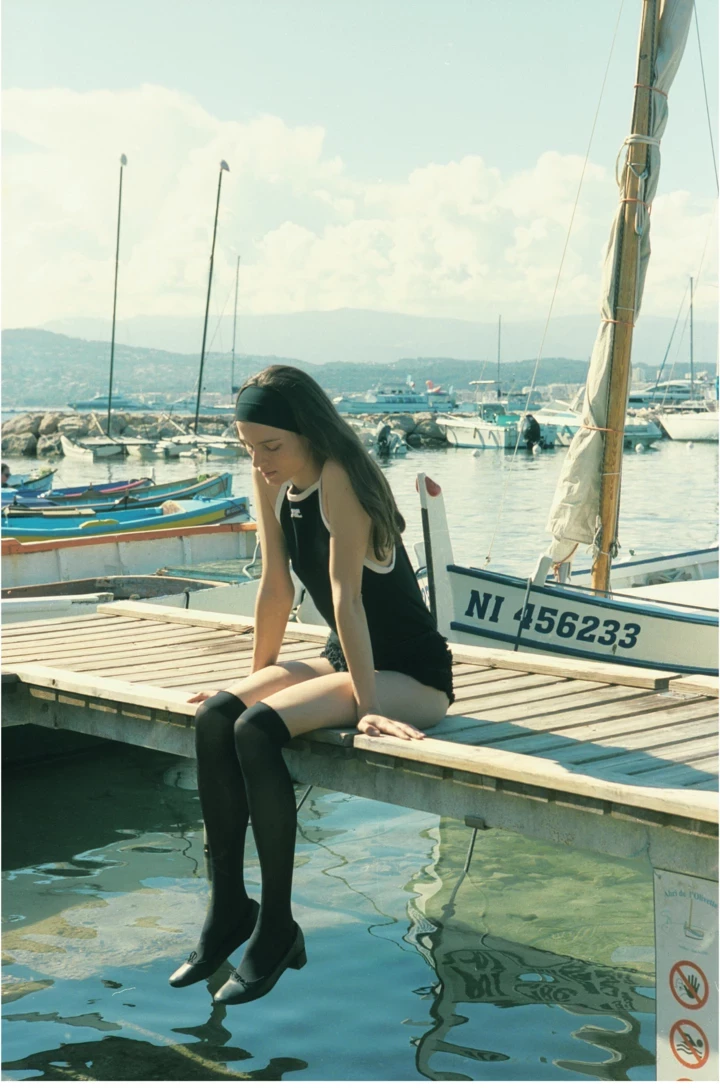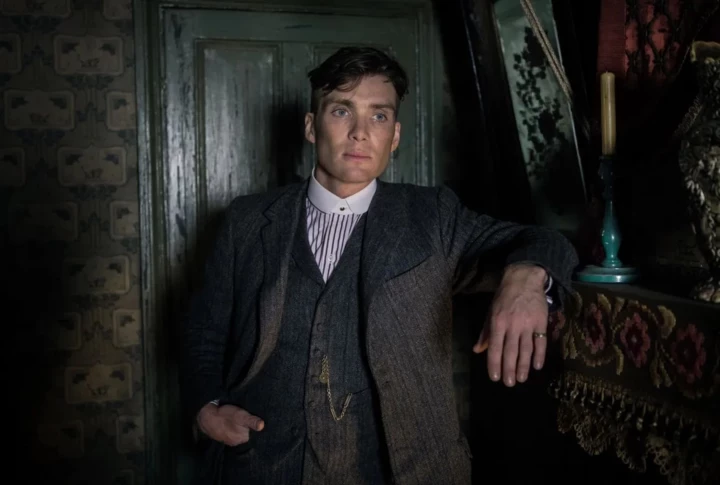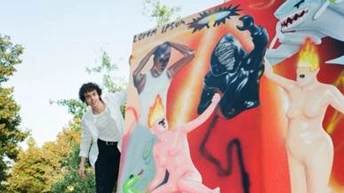
Save this storySave this storySave this storySave this story
By now, most of the great jazz artists from the mid-century crucibles of bebop and its avant-garde successors are gone, and most of the rest, in their eighties and nineties, have retired from performing. Yet there are still troves of unheard treasures to be unearthed—from radio-station vaults, concert-hall storage rooms, musicians’ archives, and collections of bootlegs made by enthusiasts. Some are unreleased and others circulate in unauthorized versions, but a diligent and devoted community of producers working at specialist record labels has made a small but mighty industry of high-quality rediscoveries and reissues, often collaborating closely with musicians and their estates. This spring has brought an unusually rich spate of such releases, which, to my ear, stand out both for their musical excitement and for their place in the history of jazz. There’s also a new release by an octogenarian jazz great who seems to be getting younger by the year.
Alice Coltrane, “The Carnegie Hall Concert” (Impulse! Records)
The keyboardist and harpist Alice Coltrane has the disadvantage of bearing the last name of her husband, John Coltrane. He was already world-famous in the mid-sixties, when they married and started performing together—their close and fruitful collaboration played a large role in the transformative furies of his final years—and his legend has largely impeded an understanding of her own distinctive and powerful artistry. Yet her earlier work, under the name of Alice McLeod (preserved in live footage from 1959 and 1960) reveals her to have been among the most quietly original jazz musicians of the era. It’s unfortunate that she didn’t have the chance (doubtless because she was a woman) to establish a recording career of her own before joining John Coltrane’s group. Still, the release of this concert from 1971, four years after John died, gives a rich sense both of her musical ideas and of her approach to forming an ensemble.
Her band here is one of doublings—two saxophonists (Archie Shepp and Pharoah Sanders), two bassists (Jimmy Garrison and Cecil McBee), two drummers (Ed Blackwell and Clifford Jarvis), and two musicians who were fellow-students of Swami Satchidananda, Kumar Kramer (playing harmonium) and Tulsi Reynolds (tamboura). Coltrane, meanwhile, is her own double, playing both harp and piano. And the doubling persists even in the structure of the concert, which features two of her compositions and two by her late husband. Alice Coltrane’s playing was also notable for its oceanic fullness, something which is seamlessly augmented here by the spacious intricacy of the band’s textures. Her sense of rhythm is heedless to bar lines and fixed beats, even when the band is accompanying her with a sinuous and jaunty swing (as in the first track, “Journey in Satchidananda”). When she plays the piano, her mercurial rapidity summons vast currents, akin to the manner of Cecil Taylor but not nearly as tempestuous.
In the two pieces composed by her, she plays the harp, in a way that shows why she found in this instrument such a natural extension of her work at the piano: both the sense of an unbroken skein of notes and of a rapt serenity undergirding the tumult are heightened. Her virtuosic harp playing in “Shiva-Loka” makes individual notes all but disappear, subsumed into a celestially comprehensive space of sound. In the two pieces by John Coltrane, “Africa” and “Leo,” she plays piano, as she did in his group. Her six-minute solo on “Leo” is a revelation: after intense duos by Sanders and Shepp on tenor sax, she enters with ringing, fervent chords that yield to gospel-like tremolos, from which emerges an obsessive bass-note chiming that sounds like church bells from space. It’s the most thrilling single concentration of her art that I’ve ever heard. And there’s much more to come, apparently: this record is part of a “Year of Alice,” a sequence of releases and events coördinated by the John and Alice Coltrane Home.
Sonny Rollins, “Freedom Weaver: The 1959 European Tour Recordings” (Resonance Records)
This astounding recording tells a story, or part of one. From the summer of 1959 to the fall of 1961, Sonny Rollins, having withdrawn from his public career in music—from studio sessions and gigs alike—devoted himself to practicing on the Williamsburg Bridge. He focussed on redeveloping his art—his tone and his stamina, his ideas and his techniques, and his sense of self. (He was also working on giving up cigarettes and alcohol.) An exuberant 1986 painting by the late Faith Ringgold that’s featured on the cover of the May 6, 2024, issue of The New Yorker memorializes this crucial drama of jazz history. But, musically speaking, what was Rollins leaving behind? What was it, in his already illustrious art, that he was trying to surpass? The clearest answer is in these performances from Europe, from March, 1959. Rollins hadn’t been in a recording studio since late 1958, so these are the main extant documents of what he was doing before going on the bridge. (Many have been available on bootlegs; not only did Rollins not earn anything from them, but their sound was far thinner; in this new, keenly remastered release, he sometimes sounds present in the room.)
Rollins, who’s now ninety-three and retired, had many different bands throughout his career—especially in the nineteen-fifties and sixties, a fervent period for him—because his prime musical concepts aren’t group-centered. (Aidan Levy’s deeply researched biography of him, “Saxophone Colossus,” details his many impulsive changes of sidemen.) Rather, Rollins is a heroic soloist, and the format that has best supported him is the simplest: a trio—accompaniment solely by bass and drums. (Of pianists, he said, in 1958, “Their chords interrupted my train of thought.”) Rollins’s quest for musical freedom involved leaping out from the rope dance of intricate harmonic structures that governed solos in swing and bebop, and these European trio sets find him pushing harder against those forms than he’d done in the studio. He brought along the bassist Henry Grimes and the drummer Pete La Roca for the 1959 European tour, which started in late February; the three-disk set features tracks taken from seven individual gigs, between March 2nd and March 11th.
It’s telling that, in Rollins’s March 4th performances of “I’ve Told Ev’ry Little Star” and “Paul’s Pal,” he’s at his boldest when trading fours with La Roca, suggesting that his ideas and his energies were still constrained by the larger frameworks that he was working in. Rollins seems particularly invigorated in three numbers from Stockholm, in which La Roca is replaced by Joe Harris, Rollins’s longtime friend from his home neighborhood of Harlem. Rollins is playfully skittery on a fast version of “Will You Still Be Mine?” But his prime inspirations arise when he’s unaccompanied, in his deeply introspective cadenzas at the beginning of “Love Letters” and “It Could Happen to You” and at the end of “Cocktails for Two.” This last is from the penultimate recorded concert (March 9th, in Frankfurt), and Rollins, in fierce, gruff form there, sounds like he’s aggressively trying to break away from something.
The final gig, from Aix-en-Provence on March 11th (in which La Roca is replaced by the seminal bop drummer Kenny Clarke, who was living in Paris), takes up the whole third disk and comprises just three pieces, each running more than fifteen minutes. It shows the sort of extended musical expatiation that the trio format fostered and which drove Rollins to seek new musical tools—in sound, sense, and spirit—in his year-plus of self-exploration on the bridge. That study time also removed inhibitions: his greatest performances, in the years to come, seem like free associations, bursting forth from deep within, with a force of unbridled inspiration that’s also fiercely logical. The 1959 European album doesn’t show only where Rollins was coming from on the bridge but also where he was going.
Art Tatum, “Jewels in the Treasure Box: The 1953 Chicago Blue Note Jazz Club Recordings” (Resonance Records)
The whirlwind virtuosity of the pianist Art Tatum—whose records made some listeners think they were hearing two pianists playing at once—belies his irrepressibly far-ranging inventiveness. As freewheeling and torrential as his performances are, they glitter with an unimpeachable precision that defines his genius as much by what it isn’t as by what it is. Tatum, who lived from 1909 to 1956, mainly performed popular tunes from the Great American Songbook, and he differed from most other major jazz musicians by his lack of vehemence. Music flowed from him with a seemingly casual, effortless complexity. His music is joyful but not happy, exuberant but not turbulent, sentimental but not sad; there’s neither tragedy nor comedy, neither winking wit nor bold self-revelation in his performances. They’re so floridly ornamental that they seem to have no core, yet so impregnably formed that they feel as solid as sculptures—and as timeless. Tatum is outside the categories of swing and bop, modern before his time and yet old-fashioned although conceptually far advanced.
In short, Tatum is a miraculous musician, and the trio setting in which he played in Chicago on August 16, 21, and 28, 1953, brings his music down to earth. The propulsive beat set by his bandmates—the guitarist Everett Barksdale and the bassist Slam Stewart—transforms the art of Tatum from a monument into a conversation, from a sculpture into a dance. From the start, as Tatum pirouettes and hairpin-turns his way through “Night and Day” and “On the Sunny Side of the Street,” it’s a wonder that the patrons of the Blue Note could keep still in their seats. Barksdale’s solos add piquant, sharp-edged dissonances, and Stewart (famed for his technique of humming along while playing the bass with a bow) adds playful blues accents.
In their company, Tatum is inspired to wink to the audience, as when, a minute into “Soft Winds,” he cuts into a funky two-handed splash and then to a bluesy ditty. His wildly transformative sensibility turns the popular groove of Lionel Hampton’s “Flying Home” into a high-speed pop-classical whirl and turns the intense melancholy of “Body and Soul” into a hectic, almost sardonic, dash. He savors the quasi-operatic twists and turns of the lighthearted “Would You Like to Take a Walk?” and turns the melodrama of W. C. Handy’s “St. Louis Blues” into a vigorous jog spangled with percussive funk hammering and some deep-rooted boogie-woogie; Tatum also speaks to the audience, communicating with a refreshing candor, as when, responding to requests for a few solo numbers (including George Gershwin’s “Someone to Watch Over Me”), he asks for the audience’s quiet: “I’m not gonna play loud.” He doesn’t have to; he plays softly and carries in his two hands a big band’s-worth of power.
Charles McPherson, “Reverence” (Smoke Sessions Records)
The alto saxophonist Charles McPherson was one of the prodigies of modern jazz, joining Charles Mingus’s band at the age of twenty-one, in 1960. Last November, at the age of eighty-four, he recorded a new album. It’s not just a treasure and a précis of a full life of musical wisdom; it’s the kind of leap ahead that comes hard to artists at any age. The album, a batch of live performances from the New York club Smoke, features him with his regular quintet. In his youth and well into middle age, McPherson’s playing strongly reflected the influence of Charlie Parker (who died in 1955). In later years and, especially, here, he has reprocessed that influence into a sound and a set of ideas that feel as original as his expansive musical personality.
McPherson’s music has always been characterized by forthright warmth and exacting clarity, as if offering calmly rhetorical wisdom to those who’d lean in to hear it. (I fondly remember first hearing him add genial heartiness to the fervor of the two jam sessions on “Mingus at Carnegie Hall.”) Working with crucial modernists, he resourcefully revealed the inexhaustible bounty of tradition. Now joined by younger veterans who are modern avatars of the bop tradition (the trumpeter Terell Stafford, the pianist Jeb Patton, the bassist David Wong, and the drummer Billy Drummond), McPherson, distinctively mellifluous in earlier years, lets fly with a questing, pungent tone, starkly unconstrained dissonances and digressions, and leaps and yawps that seem to recapture, albeit in his own way, another tradition—that of avant-gardists following in the footsteps of John Coltrane in the mid-sixties.
Stafford and Drummond join in the same vein, their duet in “Blues for Lonnie in Three” reaching peaks of frenzy to which McPherson can’t resist jumping in with peals of approval. After another ferocious solo by Stafford on “Dynamic Duo,” McPherson leaps in with an acerbic outpouring of tangles and flurries. On the ballad “Come Rain or Come Shine,” he goes beyond romanticism with ululations and gospel-drenched calls and concludes with a mostly unaccompanied cadenza that seems three-dimensional in its textural density. The ranks of musicians playing into their eighties are thin, and the ranks of those whose discoveries and self-reinventions at that age match those of their earlier years is thinner still. McPherson is at the very forefront, and his album is a marvel of modest profundity. ♦
Sourse: newyorker.com







